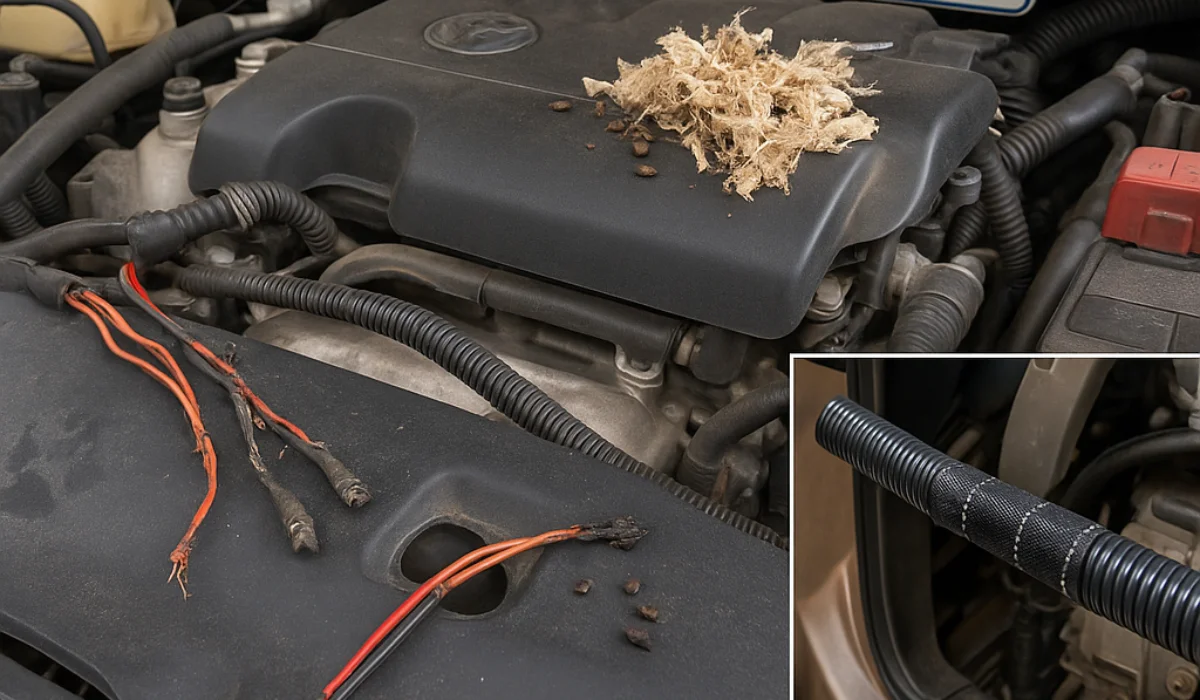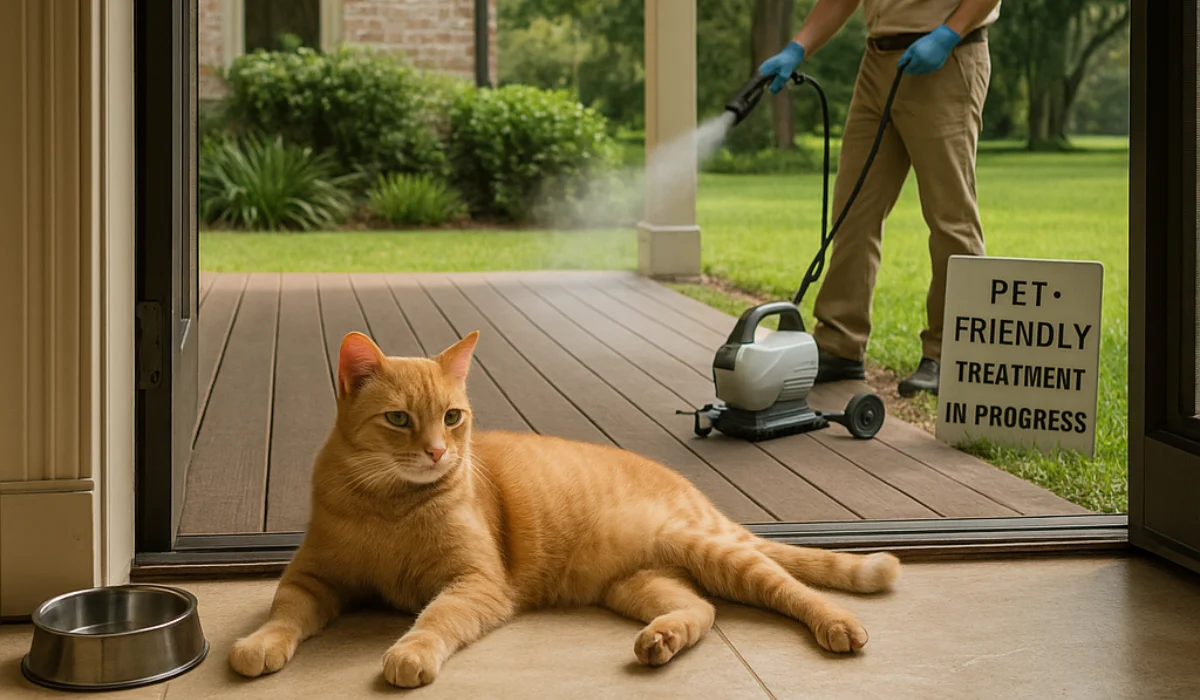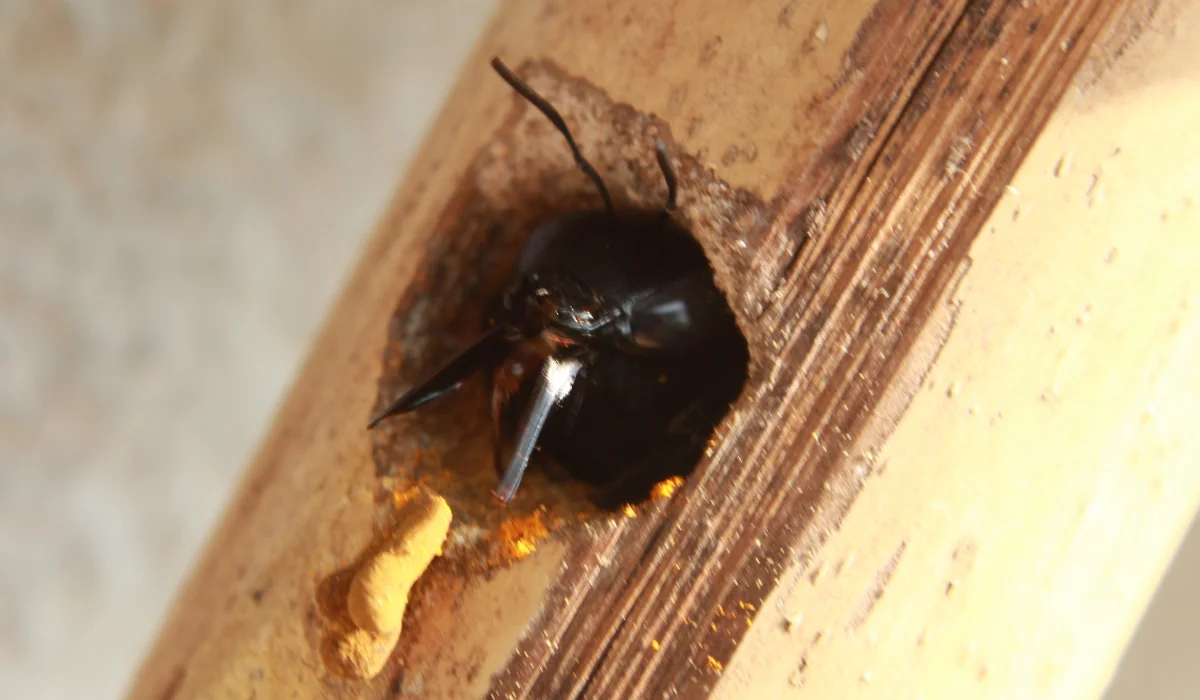It’s a scenario that’s becoming all too common in Southern Louisiana: you pop the hood on your car, and instead of a clean engine bay, you find chewed wires, nesting materials, and droppings. What’s going on?
Rats and other critters are finding car engines to be the perfect nesting spot, especially in our warm, humid Louisiana climate. From soy-based wiring to shelter from predators, there are a few key reasons rodents are making themselves at home under your hood.
Let’s break down why this is happening, what signs to look for, and most importantly, how to protect your vehicle.
Key Takeaways
• Rats chew on car engines for shelter, warmth, and food residue.
• Soy-based wiring and insulation materials are attractive to rodents.
• Signs of infestation include chewed wires, droppings, and foul odors.
• Preventative steps and professional pest control help avoid costly rodent damage.
Why Rodents Target Car Engines
Rodents love dark, hidden places, especially ones that stay warm. Your car’s engine compartment checks all the boxes. Once inside, rats use materials such as seat padding or paper in the glove box as nesting material.
Here are a few reasons your vehicle might be a rodent magnet:
Warmth and Shelter
Rats seek warmth in the cooler months and protection from predators year-round. The engine compartment is insulated and safe, especially for nesting.
Soy-Based Wiring
Honda, Toyota, and other major automotive manufacturers have shifted to using soy-based insulation in wiring harnesses. While it’s better for the environment, it’s also a food source for rodents.
Available Food Sources
Bits of food left in the cabin or engine bay, crumbs, snacks, or even the scent of peanut butter, can attract hungry critters. Once they find a spot that offers both food and shelter, they tend to stay.
Signs Rats Are Living in Your Car
If rats are making themselves at home under your car hood, you’ll likely notice some of these signs:
• Chewed wires or hoses under the hood or near the air filter
• Rat droppings or nesting materials like shredded insulation
• Unusual smells or a triggered engine light
• Noises like scratching or scurrying from the engine bay
• Damage to the wiring harness and electrical wiring
The Cost of Rodent Damage
Rodent damage to vehicles isn’t just inconvenient, it’s expensive. Chewed wires can trigger the check engine light or turn off your vehicle altogether. Dealerships across Louisiana regularly handle repairs that cost anywhere from a few hundred to several thousand dollars.
And here’s the kicker: Most warranties don’t cover rodent damage.
How to Get Rid of Rats in Your Car Engine
If you’re already dealing with an infestation, here are some DIY and professional options to help you reclaim your ride:
Clean Up the Nest
First, thoroughly clean the engine bay. Use gloves and a mask when handling rat droppings or nesting debris to avoid exposure to hantavirus or other diseases.
Set Traps
Use snap traps or baited traps (peanut butter works well) near the vehicle, especially under the hood. Avoid placing traps inside the engine bay if you’re driving the car regularly.
Use Repellents
There are a few rodent repellents you can try:
• Peppermint oil: Rats hate the smell. Soak cotton balls and place them under the hood.
• Irish Spring soap and dryer sheets: Some people swear by these for repelling critters.
• Ultrasonic deterrents: These devices emit high-frequency sounds that are unpleasant to rodents.
Please note that results may vary, and these are best used as part of a comprehensive approach to eliminating rats.
Long-Term Rodent Deterrents for Car Owners
If you park your vehicle outdoors or in rural areas of Louisiana (like Raceland, Larose, or Houma), you may need extra protection.
Engine Bay Deterrents
Some drivers use rodent-deterrent tape infused with capsaicin (the stuff that makes peppers spicy) to wrap their wiring harness. It’s not foolproof, but it can discourage chewing.
Motion-Activated Lights or Sounds
Rodents love dark, quiet spaces. Consider installing motion-activated lights or noise devices in your carport or garage.
Keep It Clean
Avoid leaving food in the car. Regularly check under the car hood and around the engine compartment for signs of activity.
When to Call Pest Control
If DIY methods aren’t working or you’re dealing with repeated rodent infestations, it’s time to call in the pros. At LaJaunie’s Pest Control, we don’t just treat your home; we can help you protect your vehicles, too.
Our team serves all of Southeastern Louisiana, including Baton Rouge, Thibodaux, and Slidell. We offer rodent exclusion services and ongoing pest control tailored to your home and property.
Conclusion
Rats chewing on car engines might sound like a weird quirk of life in Louisiana, but it’s a real and growing issue. Whether you drive a new Toyota or an older Honda, rodents don’t discriminate when it comes to nesting spots.
Stay vigilant, check under the hood regularly, and don’t ignore the signs of a rat infestation. Please call us if you need assistance identifying the problem or removing rats. We are ready to help with fast, local service you can trust.
FAQs
What’s the best repellent for rats in car engines?
Peppermint oil, ultrasonic devices, and rodent-deterrent tape can all help. For lasting results, combine multiple deterrents and keep your car clean and rodent-free.
Why do rats chew wires in car engines?
Rodents chew to keep their teeth from overgrowing. Soy-based wire insulation and the texture of wiring harnesses make them an easy target for gnawing.
Can rodent damage affect my engine light?
Yes. Chewed wires can disrupt sensors, triggering the engine light or causing electrical issues that require professional diagnostics and repairs.
 By: LaJaunie's Pest Control
By: LaJaunie's Pest Control 



